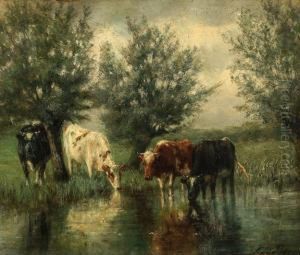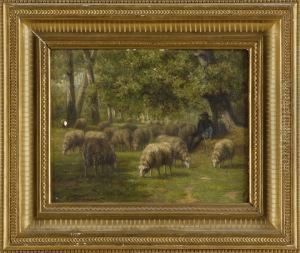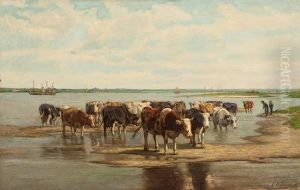Cornelis Willem Hoevenaar Jnr. Paintings
Cornelis Willem Hoevenaar Jnr. was a Dutch painter born in Utrecht, the Netherlands, in 1863. He was part of a family of artists, with both his father, Cornelis Willem Hoevenaar (Sr.), and his grandfather, Wouter Johannes van Troostwijk, being recognized painters. This artistic lineage provided a fertile environment for Hoevenaar's development as an artist.
Hoevenaar's style was influenced by the Dutch Romantic school of painting. He was known for his detailed and atmospheric landscapes, genre scenes, and still lifes. His works often depicted the Dutch countryside, showcasing the natural beauty of the area with a keen eye for detail and a penchant for capturing the changing effects of light and season.
During his lifetime, Hoevenaar was part of the vibrant artistic community in the Netherlands and his works were exhibited in various venues. However, unlike some of his contemporaries, Hoevenaar did not gain widespread international recognition. His paintings were nevertheless appreciated for their craftsmanship and contribution to the Dutch painting tradition.
Cornelis Willem Hoevenaar Jnr. lived through significant periods of change in the art world, including the rise of Modernism, but he remained mostly faithful to the Romantic style of his predecessors. His dedication to this style preserved a traditional approach to painting in the face of evolving artistic trends.
Hoevenaar passed away in 1943, leaving behind a body of work that, while not extensively documented, continues to be appreciated by collectors and historians for its representation of 19th-century Dutch painting. His legacy is also preserved through the works of his family, contributing to the rich tapestry of Dutch art history.


